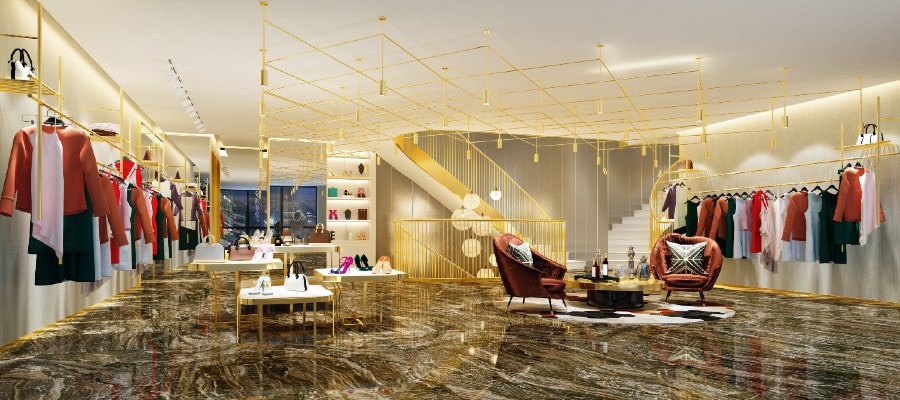Retail & Distribution
Mobile (POS) Payments: the Future of Retail
3 augustus 2017
In order for retailers to continue to survive, they need to keep their finger on the pulse of changing consumer behavior. By the year 2020 it is estimated that nearly 2.5 million smartphones will be in circulation around the world. Millennials have never experienced a world devoid of mobile devices such as tablets and smartphones. So it comes as no surprise that mobile is one of the most vital trends for bricks and mortar stores to get on board with.
Mobile Devices In-store
Having mobile devices in-store means more than simply having a tablet available for your consumers to conduct price checks and browse the online catalogue. This is something that they can do using their own device.
By equipping retail assistants with mobile devices you are able to deliver a personalized service to each consumer that walks through the door. With careful and clever data collection your sales associates will have access to your consumers shopping habits, preferences and purchase history which allows them to tailor their approach and advice in line with what they know about that particular individual.
Considering that 47% of customers highlighted poor knowledge of store associates as their most disliked experience when in a store, giving your associates all of the information they could possibly need seems like a very simple way of righting this wrong. With a level of personalized service this great, the only outcome is a consumer who feels valued and, in turn, will be loyal to your brand (read story).
Speeding up Spending
With the sales associates gliding the consumer through the purchasing process faster than ever, the last place you want this effortless façade to fall down it at the crucial moment when it comes to actually making the transaction.
Situations where consumers wait for far too long in queues andend up returning their items to the rails to leave empty handed, frustrated and unfulfilled happen far too often. However, mobile could be the solution.
Pilot studies have shown that mobile point of sale (POS) terminals can cut the average time for a cash transaction in half, while also processing card payments up to five times faster. Not only does this improve the overall consumer experience by dramatically decreasing waiting times, but by allowing mobile payments to be made in-store, retailers are also able to free up valuable floor space that would have otherwise been used for checkout counters.
Luxury brands are one of the biggest beneficiaries of forgoing registers for tablets. Take, for example, the Victoria Beckham flagship store in London. Rather than having checkouts, sales associates are able to take payments via iPad. This serves the dual purposes of eliminating unsightly checkouts, creating more flexible floor space for installations and product launches, and speeding up the purchasing process. From a consumer’s point of view, what’s not to love?
Mobile payments really are the way forward. From contactless payment to the digital wallet, consumers want transactions to be fast, simple, and secure. If you’re not offering this, and your competitor is, it’s easy to see where their loyalty would shift to.
Visa launched their digital wallet at the end of 2013 and already has over 20,000 retailers signed up to their program. The wallet, V.me, allows the user to have instant access to a number of accounts at the touch of a button. It’s expected that the digital wallet will reduce shopping basket abandonment and increase conversion rates due to the smoother, more secure, and super-fast checkout process. For bricks and mortar stores reduced queues, increased security and simplifying coupon redemption will make a big difference to the consumer’s perception of their retail experience.
With your sales associates freed from their position behind the checkout counter, you open up a world of possibilities. Greater interaction with consumers, closer monitoring of inventory on the store floor, and the increased flexibility of floor space all add up to a much more concise, customer-centric approach to shopping.
In order for retailers to continue to survive, they need to keep their finger on the pulse of changing consumer behavior. By the year 2020 it is estimated that nearly 2.5 million smartphones will be in circulation around the world. Millennials have never experienced a world devoid of mobile devices such as tablets and smartphones. So it comes as no surprise that mobile is one of the most vital trends for bricks and mortar stores to get on board with.
Mobile Devices In-store
Having mobile devices in-store means more than simply having a tablet available for your consumers to conduct price checks and browse the online catalogue. This is something that they can do using their own device.
By equipping retail assistants with mobile devices you are able to deliver a personalized service to each consumer that walks through the door. With careful and clever data collection your sales associates will have access to your consumers shopping habits, preferences and purchase history which allows them to tailor their approach and advice in line with what they know about that particular individual.
Considering that 47% of customers highlighted poor knowledge of store associates as their most disliked experience when in a store, giving your associates all of the information they could possibly need seems like a very simple way of righting this wrong. With a level of personalized service this great, the only outcome is a consumer who feels valued and, in turn, will be loyal to your brand (read story).
Speeding up Spending
With the sales associates gliding the consumer through the purchasing process faster than ever, the last place you want this effortless façade to fall down it at the crucial moment when it comes to actually making the transaction.
Situations where consumers wait for far too long in queues andend up returning their items to the rails to leave empty handed, frustrated and unfulfilled happen far too often. However, mobile could be the solution.
Pilot studies have shown that mobile point of sale (POS) terminals can cut the average time for a cash transaction in half, while also processing card payments up to five times faster. Not only does this improve the overall consumer experience by dramatically decreasing waiting times, but by allowing mobile payments to be made in-store, retailers are also able to free up valuable floor space that would have otherwise been used for checkout counters.
Luxury brands are one of the biggest beneficiaries of forgoing registers for tablets. Take, for example, the Victoria Beckham flagship store in London. Rather than having checkouts, sales associates are able to take payments via iPad. This serves the dual purposes of eliminating unsightly checkouts, creating more flexible floor space for installations and product launches, and speeding up the purchasing process. From a consumer’s point of view, what’s not to love?
Mobile payments really are the way forward. From contactless payment to the digital wallet, consumers want transactions to be fast, simple, and secure. If you’re not offering this, and your competitor is, it’s easy to see where their loyalty would shift to.
Visa launched their digital wallet at the end of 2013 and already has over 20,000 retailers signed up to their program. The wallet, V.me, allows the user to have instant access to a number of accounts at the touch of a button. It’s expected that the digital wallet will reduce shopping basket abandonment and increase conversion rates due to the smoother, more secure, and super-fast checkout process. For bricks and mortar stores reduced queues, increased security and simplifying coupon redemption will make a big difference to the consumer’s perception of their retail experience.
With your sales associates freed from their position behind the checkout counter, you open up a world of possibilities. Greater interaction with consumers, closer monitoring of inventory on the store floor, and the increased flexibility of floor space all add up to a much more concise, customer-centric approach to shopping.
Sources :
http://stevenvanbelleghem.com
http://www.slideshare.net/G3Com/customer-engagement-masterclass-instore-clienteling
http://www.deloitte.com
http://www.visaeurope.com/en/newsroom/
http://paymantix.com/en/future-of-e-wallets/


